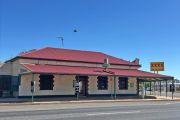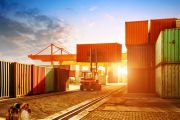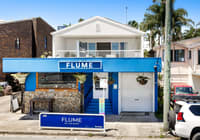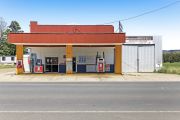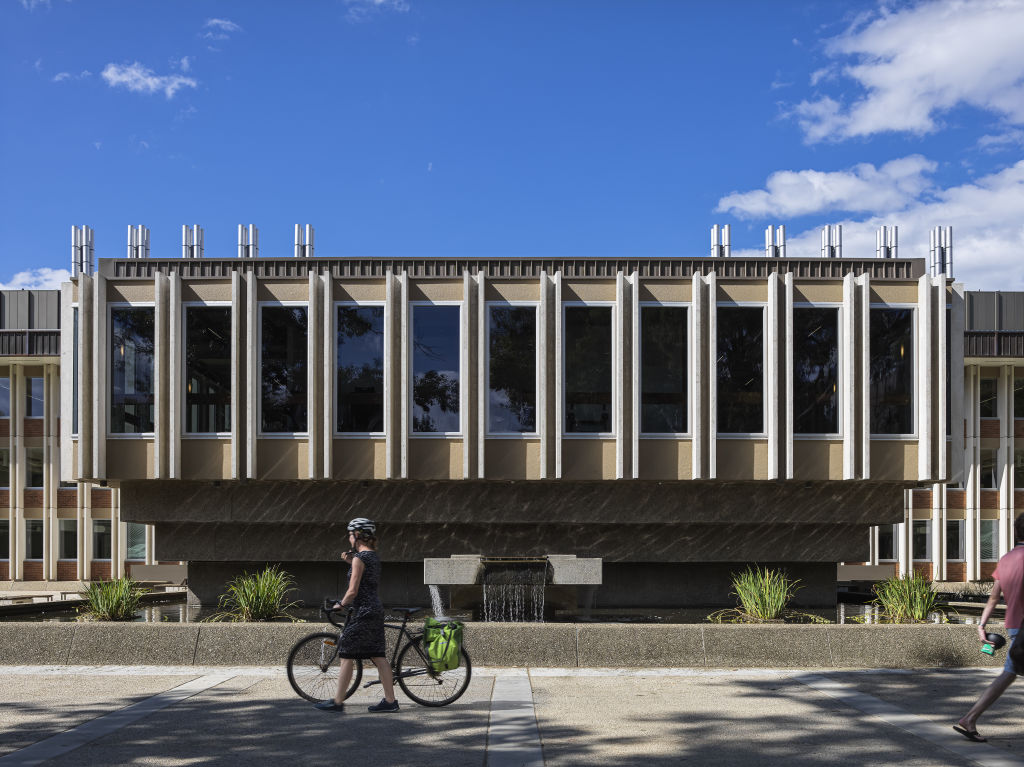
Canberra celebrates large modernist building following $75 million refurb
The ACT is the first major state architectural award programme that kicks off the country’s annual pageant of the best and latest building design. On Friday, when it announced its winners, the national capital’s chapter multiply celebrated one particular vintage building that has been given a powerful new relevance.
The Birch Building, which started life in 1968 as the Australian National University’s Research School of Chemistry, won four major name awards, including the paramount Canberra Medallion.
The $75 million refurbishment by Hassell of a building with a rhythmic pre-cast concrete facade that is over 50 years old was also named for the excellence of its remade interiors that the jury decided are “useful, technical and practical and designed with people in mind … All tasks are provided for, all personality types accommodated”.
The vast modernist structure won the Enrico Taglietti Award for Education. “This is exemplary educational architecture”, the jury decided.
It took out the Canberra Medallion for being overall “a project of exemplary standard” that is certainly very last century, but has that has been so effectively brightened up and technologically renewed that it is seamlessly “supporting of contemporary education”.
Given that it sits as a flagship building among the 150 other mostly interesting structures on ANU’s picturesque hillside Acton campus, the Birch Building Refurbishment also importantly won the J.S Murdoch Award for Heritage.
The juries decided that “the most impressive aspect of the work undertaken by Hassell is that you are experiencing an original building”. In other words, the big reboot hasn’t muddied the mid-century intent.
And Hassell’s work is so respectful an achievement that it could hopefully influence other practices and planning authorities across the country to do similar things rather than razing perfectly sound structures.
One of the notable buildings on the ever-evolving architecture trail of the Acton campus is, of course, Roy Ground’s beautiful homage to the space age. The 1956 Shine Dome presides as one of Australia’s most significant buildings, and Sir Roy’s name is attached to the chapter’s award for Enduring Architecture.
Intriguingly, and for a private house rather than a public building, this year’s award was given to the Manning Clark house designed by Ground’s former practice partner, the late Robin Boyd, in 1953.
The simple masonry home – with its two connected wings, bagged walls, excellent orientation and most of its furniture, colours and objets intact – remains, said the jury, “a quality design”. It’s one of the numerous mid-century homes that now make Canberra one of the most important custodians of residences of the era.
Of course, lately-made architecture also came into the spotlight on Friday. But even newly-minted Canberra projects can pay heed to the unique design legacies of the Federal Capital.
In the heart of Civic near London Circuit are two new buildings, including a 130 room hotel and a government office, that make up parts of the multi-faceted Bates Smart authored Constitution Place that won three awards: The Sir John Overall Award for Urban Design, the John Andrews Award for Commercial Architecture and a further award for interior architecture.
When he laid out the capital, Walter Burley Griffin made a recurring theme of concentric circles. In the impressive and soaring atrium of the ACT Government office at Constitution Place, circularity is made stunningly remarkable in the form of three interlocking rings that repeat as they rise through the tall space.
The jury duly acknowledged the whole project that interconnects with other ‘fine grain’ elements in that part of town as “a masterly contribution to the centre of the Griffins’ city beautiful vision for Canberra”.
